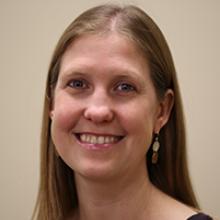Transitional Kindergarten: A Unique Approach to Pre-Kindergarten in California, but Is it Effective?
The short answer: Yes.
An AIR study released today finds that Transitional Kindergarten, the first year of a two-year kindergarten program for young five-year-olds in California, appears to improve children’s school readiness in critical areas of academic learning and development.
California established Transitional Kindergarten (TK) as a new grade level to serve students affected by a change in the birthdate cutoff for kindergarten. In 2010, the Kindergarten Readiness Act moved the cut-off date for turning five—the entry age—from December 2 to September 1. This meant that thousands of young five-year-olds would have to wait an extra year to start kindergarten. Transitional Kindergarten filled that gap with an extra year of schooling for children caught in this educational limbo.
AIR’s study, based on a rigorous design, finds that students who had participated in TK had greater skills in literacy and math, and better learning skills, including impulse control, working memory, and cognitive flexibility—together called “executive function”—than their peers who were born after December 2.
Could other factors have been at play? We controlled for students’ age differences so they didn’t color the results, and the peer comparison group entered kindergarten at the same time as the transitional kindergarten students.
That said, the benefits of this extra year had limits. We found no differences in the ratings teachers gave the two groups of students in social skills and classroom behaviors.
The size of the impacts this study estimated are notable. For example, students who attended Transitional Kindergarten had a five-month learning advantage in literacy skills and a three-month advantage in math over peers who weren’t in the program.
We also considered prior early education experiences among TK and comparison students (those born after December 2). More than 80 percent of students in the comparison group attended some type of center-based preschool program the year before kindergarten, while TK students were enrolled in TK. So, Transitional Kindergarten’s observed effects are over and above those that comparison students experienced in their early education programs.
As a next step, additional questions deserve further exploration:
- Is TK equally effective for all students? Or might, for instance, dual language learners or children who did not attend preschool benefit especially from this extra year of school?
- What characteristics of TK lead to the greatest success for students in kindergarten?
- Will TK’s effects persist beyond the first months of kindergarten?
This last question is especially important since a recent study by Vanderbilt University found no differences between preschool attenders and non-attenders by the end of kindergarten, and small negative effects by second grade. But this study didn’t spell out details about the environments and instructional practices in the preschool classrooms. AIR’s continuing evaluation of TK in California will try to nail down the specific structures, instructional practices, and resources that matter most in supporting students’ learning through the end of kindergarten.
Until this year, districts had to offer TK only to students who turned five between September 1 and December 2 of that school year. The 2015 budget bill allows districts to enroll younger children though state funds won’t be available until the child turns five. Still, some districts are offering these partially funded, “expanded” TK programs anyway and subsidizing them with other sources.
Is California Transitional Kindergarten effective? It appears to improve kindergarten readiness in literacy, mathematics, and executive function for students eligible to attend. For the long-term answer, we must dig deeper into questions about for whom and under what conditions Transitional Kindergarten is most effective. That will come as the study unfolds over the next year.
Karen Manship is a senior researcher at AIR. Heather Quick is a principal researcher at AIR. Deborah Parrish and Eboni Howard also contributed to this post.


